Presbyopia
Presbyopia is the condition wherein the natural internal refocusing power of the eye weakens. This typically becomes noticeable when patients are in their forties. Those patients who have never needed glasses begin to notice they cannot focus on close images and need to increase distance between their eyes and the image viewed. Farsighted patients sometimes become symptomatic at an earlier age. Nearsighted patients begin to notice the same effect, and some will take their glasses of to read comfortably.
Presbyopia can be corrected with spectacles or contact lenses. Patients who have never worn glasses can use reading glasses for close vision. Nearsighted or farsighted patients achieve relief with bifocal glasses or progressive (no line) spectacles. Some patients who wear contact lenses can be fit with bifocal contacts, while other patients prefer a situation referred to as monovision.
With monovision, one eye is fully corrected for distance, and the fellow eye is left with a certain degree of nearsightedness. The nearsighted eye becomes the eye used for reading or other tasks requiring close vision. Some patients do not accept monovision, but it can result in very successful vision without the need for glasses.
LASIK can successfully treat presbyopia when used to create monovision. Prospective monovision LASIK patients can try monovision with either appropriate contact lenses or simulation with spectacle prior to surgery.









